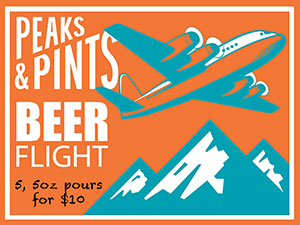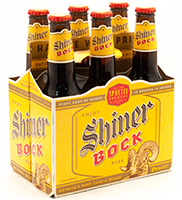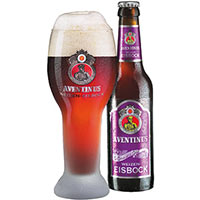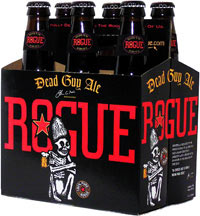 March 20 is National Bock Day. In celebration, Peaks and Pints offers a bock style flight of five beers: Craft Beer Crosscut 3.20.17: A Flight of Bock.
March 20 is National Bock Day. In celebration, Peaks and Pints offers a bock style flight of five beers: Craft Beer Crosscut 3.20.17: A Flight of Bock.
Bock beer is a strong beer style generally 6.3 percent alcohol by volume and higher. It is believed to have originated in Einbeck — a town famous for brewing in the Middle Ages. Enibeck was one of the first cities to ban the use of gruit in beer in favor of hops as a way to circumvent the Catholic Church’s high prices on gruit. The oldest written record of beer from Einbeck is from 1378 in the form of a receipt for two casks of “Einbecker” sold to the town of Celle, Germany.
Realizing that beer was a profitable export, Einbeck employed a novel quality control system. People who wanted to brew were allowed to malt their own grains and make beer in their own cellars, but not own their own brewhouse. This was owned by the city that employed professional brewmasters who would take the brew kettle to individual homes. The procedure ensured that all Einbeck beer was brewed the same and met the same quality standards. They would later certify the finished product for sale. The city branded their beer as “Ainpockisch Pier” a term that was soon shortened to “Oanpock” by Bavarian consumers and later to “a bock bier,” hence the name.
So, why the goat iconography on bock beers? Bock literally translates to ram or Billy goat in German. So it began as a visual pun (and maybe a slight poke at the Northern Germans by the Bavarians) and has now become the symbol of bock beer.
Bock is a bottom fermenting lager that generally takes extra months of lagering (cold storage) to smooth out such a strong brew. Bock beer in general is stronger than your typical lager, more of a robust malt character with a dark amber to brown hue. Spring is the season for maibock, a lighter, more refreshing bock beer style. But this season is also known for doppelbock, a style that originated as a beer to drink during lent. Bock beers can vary greatly from style to style and can go from light and refreshing to some of the strongest beers in the world with eisbocks.
 Spoetzl Shiner Bock
Spoetzl Shiner Bock
4.45% ABV, 13 IBU
In 1915, with a co-buyer, Kosmos Spoetzl, a brewmaster trained in Germany, bought the Shiner Brewing Association and gave it his last name, but he still remained true to Shiner and kept the beers named after their precious Shiner, Texas. Shiner Bock is a no-frills kind of bock, but still arguably the most demonstrative of American-brewed bocks. Its very light body, and only slightly roasty notes from caramel malts, making this an easy bock to drink.
 Schneider Aventinus Weizen-Eisbock
Schneider Aventinus Weizen-Eisbock
12% ABV, 15 IBU
Eisbock is a traditional German beer that is made by freezing off and removing water to further concentrate flavor, body and alcohol content. In other words, eisbocks tend to be complex and extraordinarily rich beers that aren’t for the faint of heart (or weary of liver). Schneider Weisse‘s eisbock is wheat-based, with a smooth malty taste and creamy, syrupy feel. Rum, coffee, fruity flavors abound.
 Ayinger Celebrator Doppelbock
Ayinger Celebrator Doppelbock
6.7% ABV, 24 IBU
During Lent, as legend goes, German monks sustained themselves by sipping strong, dark lagers dubbed doppelbocks. This timeworn tale of liquid bread tends to overshadow an indisputable truth: Doppelbocks are fantastic feats of brewing engineering, no more so than Ayinger Celebrator. With accolades from the late Michael Jackson and a collection of gold medals from the World Beer Cup, this rich, toffee-rocked lager is dark, crisp, with a touch of chocolate and grape notes. While presenting a full body, it’s not cloyingly sweet and features a wonderfully creamy body and enough alcohol to warm your palate.
 Paulaner Salvator
Paulaner Salvator
7.9% ABV, 28 IBU
There is a smiling monk and an English gentleman on the label for the Salvator. What’s not to like? Answer: nothing. This is delicious. The Paulaner Friars invented the doppelbock 400 years ago, and is actually the founding beer of Paulaner. Beautiful bready aromas, with tinges of alcohol spiciness, waft enticingly from the rocky, cream-color head. German malts flow sweetly across the tongue, brightened by green grape and cherry fruitiness.
 Rogue Dead Guy Ale
Rogue Dead Guy Ale
6.8% ABV, 40 IBU
Dead Guy Ale has been around for a while, and to many people, it’s the standard that all American-made maibocks are held to. Dead Guy Ale incorporates Rogue’s proprietary Pacman yeast, and features Pearl and Sterling hops for a robust take on the classic German beer. Although the beer’s missing the style’s bread crust, the present flavors are harmonious: Bread with toasted edges runs over the tongue before orange notes pop up. Hefty bitterness chases the swallow while peppery alcohol prickles the sip front to back.
